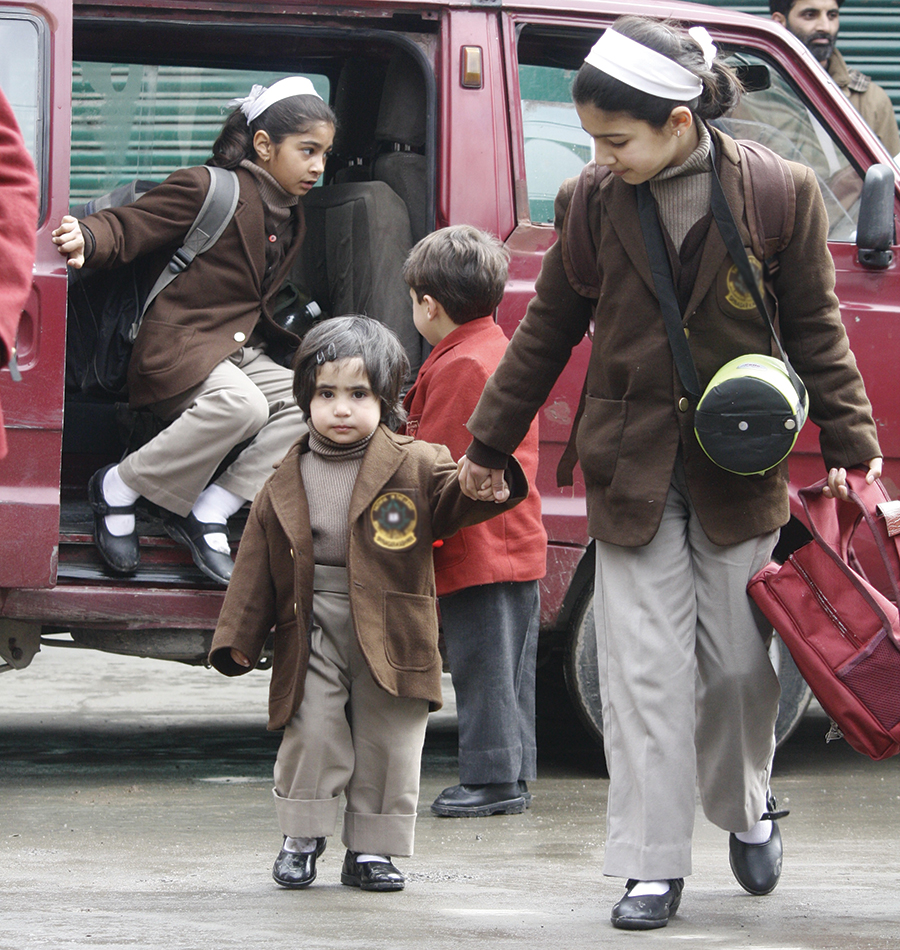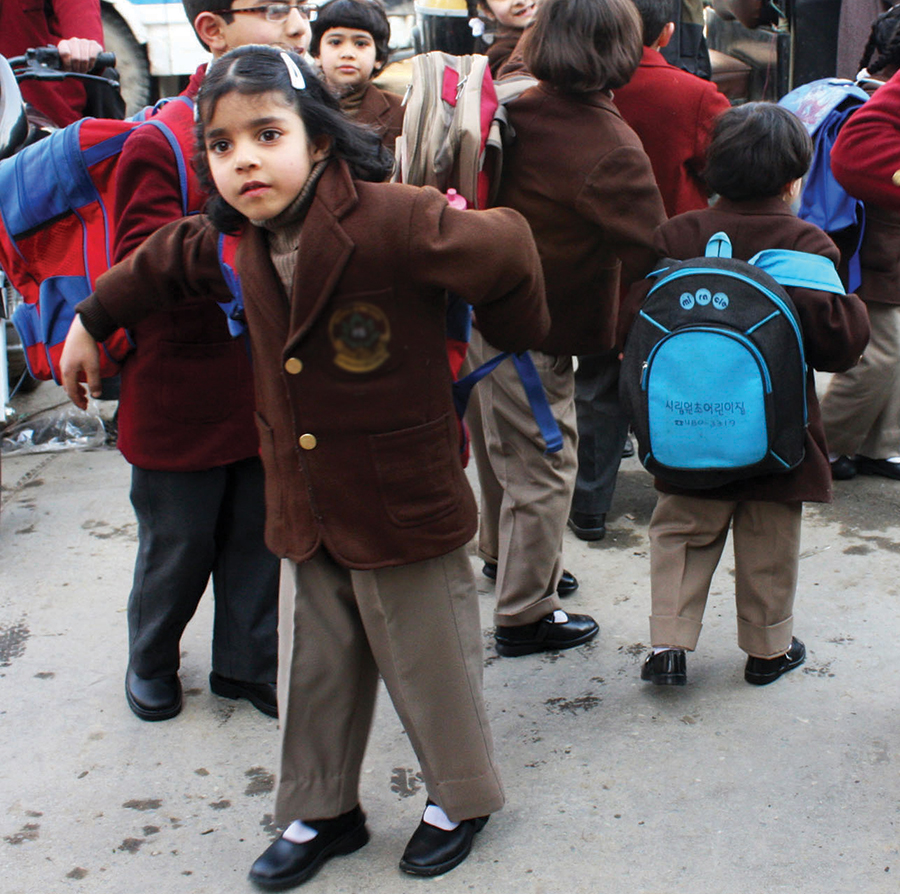With more than half of the 150 thousand fresh admissions, every autumn, opting for private sector schools, the costs of educating the new generation are spiralling up as the processes revolve around money. The season fetches more than Rs 500 crore to the private sector, reports Umar Mukhtar

With parents willing to spend on the education of their wards, the sector is getting increasingly commercialised. The biggest ‘harvest’ is taking place perennially with new admissions happening in autumn (October-November) when a new generation moves to kindergarten in formal schools. Some of them have already spent one to two years in crutches, preparatory schools and the Anganwadi Centres.
“This is the key season when most of the bulk funds come to the private education sector,” an insider said. “It all depends on how you package the facility that you own.” It has started with thousands, and then moved to tens of thousands and now it is already in lakhs, at least in a few cases. And people are paying.
Irshad Ahmad has admitted his son to the G D Goenka School Srinagar. He paid Rs 1.5 lakh rupees as the admission fee for the nursery class. In the first year, he will be spending around Rs 75,000, at Rs 6000 per month as the tuition and bus fee.
To provide his son good quality education, Irshad withdrew some money from his GP Fund to admit his dearest son to a private school. After all, it is the future of his son. But the tragedy is that Irshad is himself a school teacher in a state-run school.
Firdous Ahmad is a banker. His daughter got admission to Delhi Public School, Srinagar. The cost: Rs 1.10 lakh as admission fee and Rs 4000 for monthly tuition.
The funny part of the exercise is that people are not complaining over the hefty amounts, they are being asked to deposit for the good education of their wards. They have no tensions with fee structure either. The parents, some of them pushed to temporary bankruptcy by the ‘dream education’, say the procedure of the private schools have gone “very difficult”!
Ask Firdous, for instance. He had to make a serious effort in understanding the importance of the “interview” to his year old. School managers rarely admit they “interview” the kids. A general belief is that they basically see whether the “right” parent has emerged as their client or not.
When Firdous and his daughter reached the school early morning to appear for the “interview” by the school management, they both were nervous. Right from leaving home, Firdous made her learn some dos and don’ts: how to talk, how to sit and how not to react… The idea of getting rejected was the real fear factor for father-daughter.
“I was seeing my daughter getting nervous because the pressure at such a tender age is pathetic,” Firdous, now relieved, said. “But unfortunately we have to go through this mil because this is the system we have.”
Ideally, the system of education should open arms to the newcomers because this is the first step that is formal in their lives. Tragically, this starts with an “interview”, sort of an examination. Some pre-primary centres are packing their capacity so that the kids enrolled with them will essentially make it to the “best schools”.
This is the education sector’s new normal. All schools follow the same procedure. Presentation Covent School charges Rs 68000 as admission fee for the new entrants in nursery class. Its sister concern seeks an upfront Rs 88,000 after the kid manages his passage in the gruelling process.

“Is there any system that will ensure us that the costs parents pay are almost equivalent to the education, they provide,” Mohammad Yaseen, an employee of the State Board of School Education, said. “Is there a way out?”
Almost all privately run schools have this practice now. The demand is top-down. The so-called “best schools” are in huge demand and once they fill their seats, the B-category is the priority and then the remaining gets disbursed to all other schools. Apparently, C-category schools are usually catering to low economic groups.
But the trend that started from Srinagar has impacted the rest of Kashmir. Now there are A and B category private schools in town as well.
But how huge is the sector sucking in the admission season. It is slightly difficult but not impossible. Even officials find it difficult to offer an idea.
“Early Childhood Care and Education (ECCE) is an area that is fragmented in the existing set-up,” a senior IAS officer told Kashmir Life. “While it is OK in the private sector, in the public sector, the 3-5 age group is usually taken care of by the Social Welfare Department through its Anganwadi centres. This system makes formal schooling accessible to the student at around 6 in class I.”
In the last few years, the policy intervention helped certain schools change at two levels: first, some schools added a nursery class, and second, some schools, mostly under community pressure started teaching English at the basic primary level. This, they did to offset the onslaught by the private sector that had led to the closure of some of the government schools.
By and large, the figure of around three lakh kids who are in ECCE systems in the Kashmir region remains constant. A 2008 figure suggested that around 106233 new admissions including 58003 boys and 48230 girls joined the formal education system in schools. That means no less than 100 thousand kids need admission in a school, in nursy or in the first primary, every autumn. Officials’ surveys suggest 75-80% of them prefer the private sector, especially in the urban areas “Most of the admissions at the elementary level happen in the private sector and we must admit it,” the officer said. “This also is a fact that as they grow up, part of the shift to government schools and it is a complete reversal in plus two levels.”
Kashmir has 2610 private schools, which is quite a few if compared to the 11766 schools that government owns and runs. The overall enrolment in private schools is 589734 which is more than half of 933025 students enrolled in government schools.
A senior education ministry official said that the first primary is a better parameter to locate the exact number of new entrants to the formal education set p. “In 2015-16, 300528 students were enrolled in the first primary across the state in both private and public sector schools across J&K, “ the official speaking off the record said. “Of this 155 thousand were in Kashmir division.”
The officer said that across the state 59.4 per cent of the new entrants chose the state government-run schools, in Kashmir only 57.6 per cent were enrolled in the government schools. That means the private sector got 65720 candidates in class first. But the private sector opens at the nursery level.
If every parent spends Rs 50,000 for admission to his ward in a year, how much make for the 80,000 students? A whopping Rs 400 crore. Insiders in the sector said, it can well go up to Rs 600 crore, if hidden costs and other “funds” are to be accounted for.
But that is not the only money the private sector stakes, every autumn. For new admissions, they supply books, stationery, and uniform. Unlike government schools, the entire private sector has winter and summer uniforms and in most of the cases, two sets are “suggested”, if not “recommended”.
Recently Pulwama’s Dolphin International School started “providing” 17 books for nursery kids. All these books, part of the curriculum, had essentially to be purchased from the school stationary shop. It cost a whopping Rs 5000, for a candidate.
Parents were not unhappy over the costs because “You Know, English Schools are different!” It was eventually, the weight of the 17 books, which triggered some concern among parents. Reports suggest the school management was ‘gracious’ in reducing the number, eventually!
Last year a survey conducted by the department of social and preventive medicine of state-run Medical College revealed that in Kashmir schools, 83.7 per cent of children carry bags heavier than 10 per cent of their body weight. Children, under the law, should have school carry bags weighing lesser than ten per cent of their body weight.
While a Fee Fixation Committee (FFC) is in place on the orders of the High Court (interestingly, not in Jammu), it is yet to make an impact. Even if it does, who will regulate the other profit-making processes from books to uniform? If parents pay so much for their education, why is private tuition still a requirement?















